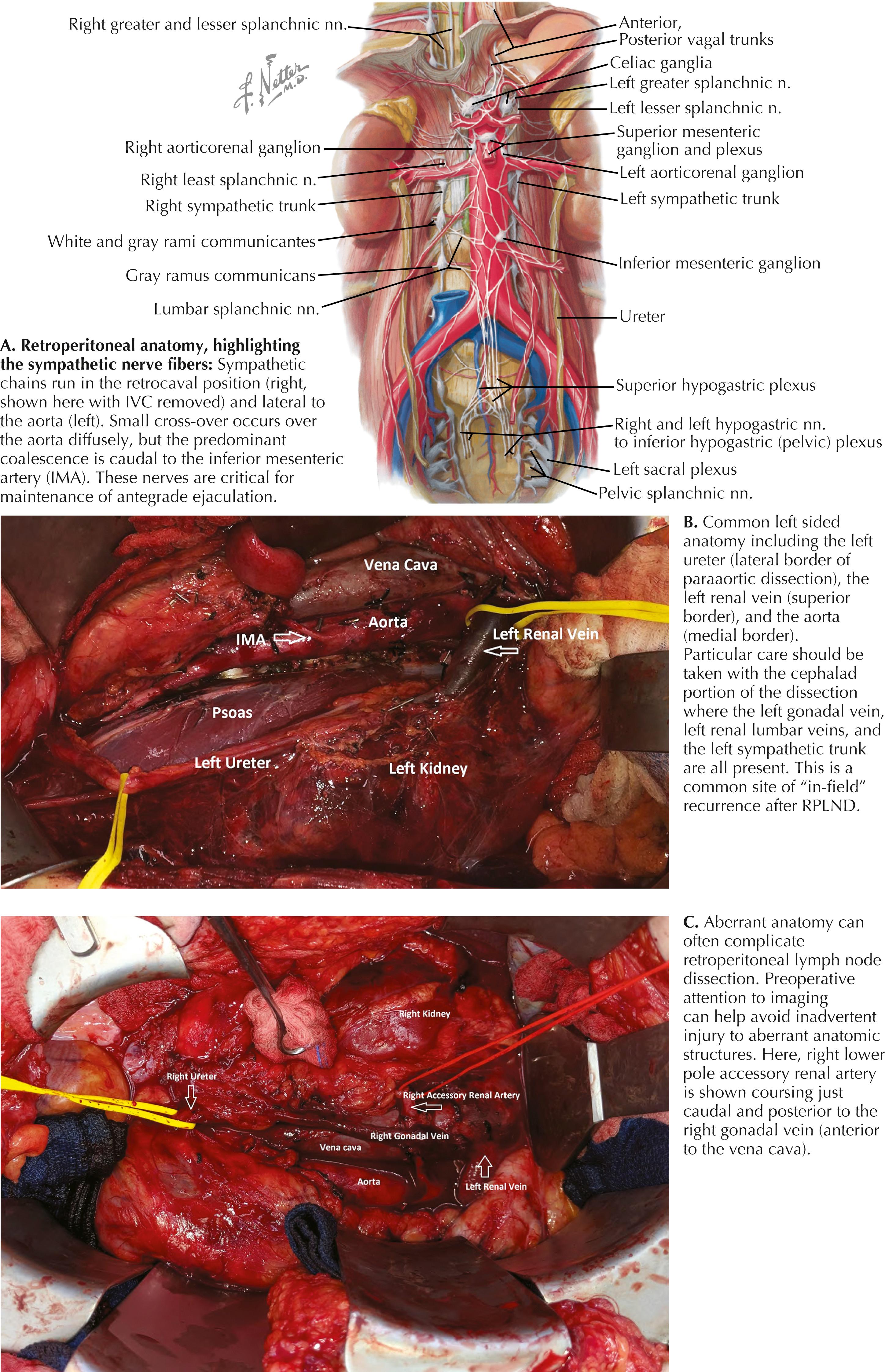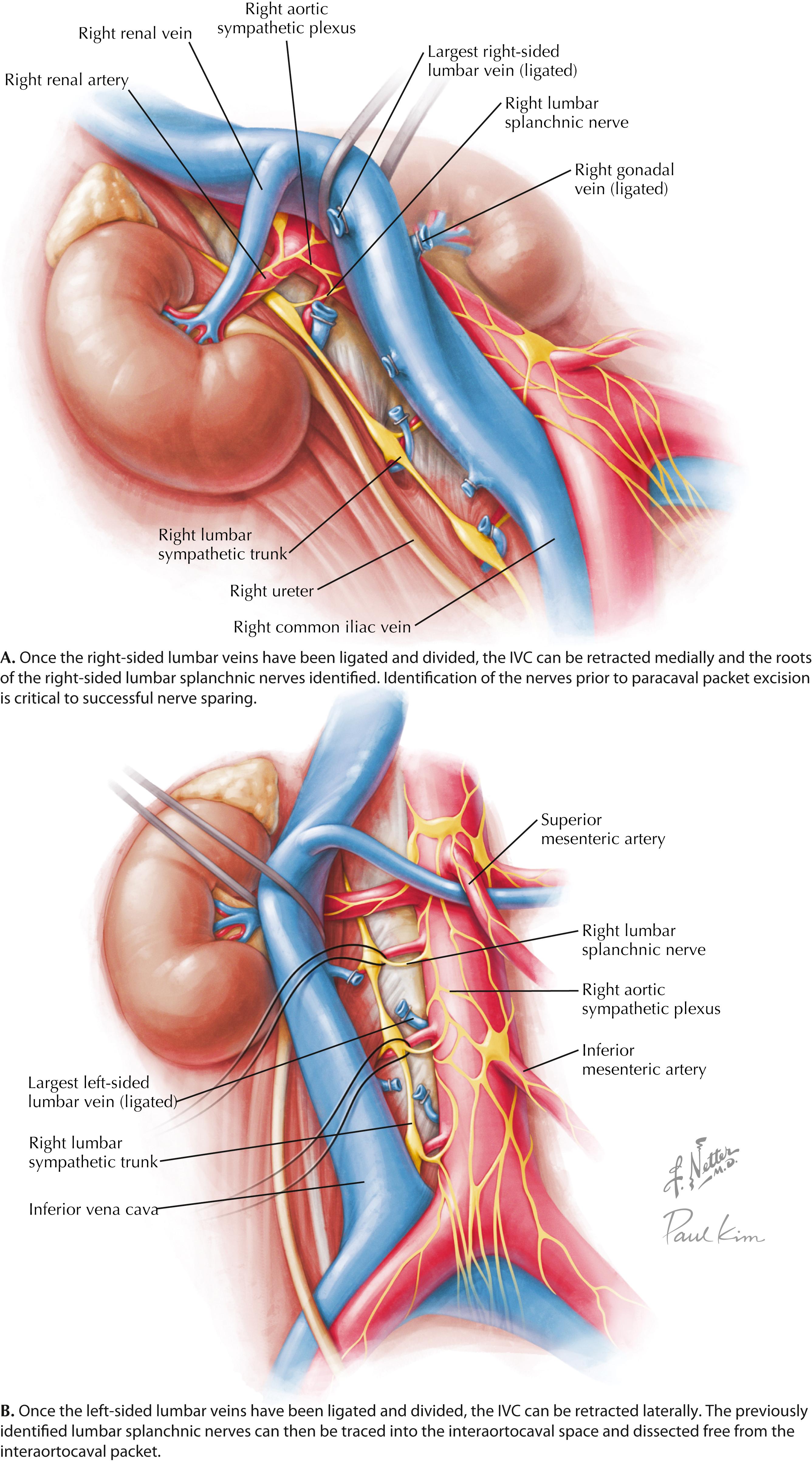Physical Address
304 North Cardinal St.
Dorchester Center, MA 02124
Classically, a midline incision is made running from the xiphoid to just below the umbilicus. The peritoneum is entered, and the bowel retracted cephalad. The posterior peritoneum from the right lower quadrant (just inferior to the cecum/appendix) is then incised up to the ligament of Treitz, exposing the retroperitoneum. Care must be taken during this step to avoid injury to the right ureter, which courses across this plane of dissection just below the posterior peritoneum. Further mobilization of the right colon can be done by incising the white line of Toldt and rotating the ascending colon and cecum medially and cephalad. With the bowel mobilized and retroperitoneum exposed, the duodenum/pancreas are carefully dissected off the great vessels and retracted cephalad. A self-retaining retractor is then placed (such as a Bookwalter), and the bowel is packed out of the operative field; this is best achieved by keeping the bowel in the abdomen retracted under the abdominal wall, which limits the venous and lymphatic congestion that comes with placing the bowel on the patient’s chest in a “bowel bag” and may contribute to earlier return of bowel function postoperatively. The primary blood supply to the bowel is from the superior mesenteric artery (SMA), which should be palpable at the superior margin of the retroperitoneal exposure. Retractors should be placed carefully to avoid compression of this critical vessel.
Exposure is critical for safe and oncologically sound RPLND. Ideal exposure should allow for visualization of the great vessels from the superior aspect of the renal vessels down to the bifurcation of the common iliac vessels. Identification of the critical retroperitoneal structures is paramount. Both ureters should be identified because they serve as the lateral boundaries of the full-template dissection. The aorta and vena cava as well as the left renal vein should be readily identifiable. In addition, the root of the inferior mesenteric artery (IMA) should be identified. This is a critical landmark as postganglionic sympathetic nerve fibers, which subserve ejaculation, coalesce around the origin of the IMA on the anterior surface of the aorta, forming the hypogastric plexus. Damage to this plexus can result in loss of ejaculation. Anatomy of the sympathetic nerve fibers through the operative field is shown in Fig. 68.1A . Left-sided retroperitoneal anatomy is shown in Fig. 68.1B . Right-sided retroperitoneal anatomy along with a common anatomic variant (accessory lower pole renal artery) is demonstrated in Fig. 68.1C . Assessment for anatomic variants on imaging is critical prior to surgery.

The lymph node dissection is then initiated using a “split and roll” technique. The nodal and fatty tissue overlying the anterior surface of the left renal vein is split and rolled caudally. This dissection is carried back to the inferior vena cava (IVC), and then caudally along the IVC, rolling the tissue into the paracaval and interaortocaval regions, respectively. The dissection should be in the plane that preserves the adventitia of the major vessels. During the dissection of the anterior surface of the vena cava, the right gonadal vein is ligated and divided. Dissection is carried down to the confluence of the common iliac veins. Dissection is avoided in the presacral space between the iliac vessels, because this is the site of nerve confluence and the hypogastric plexus. Once the vena cava and left renal vein have been exposed, attention is then turned to either exposure of the aorta or the precaval nodal dissection. The aorta is generally exposed first by performing a “split and roll” of the nodal and fatty tissue overlying the anterior surface of the aorta from the crossing of the left renal vein down to the IMA. Dissection caudal to the IMA is not performed at this time because this is where the postganglionic sympathetic fibers cross anterior to the aorta. With the aorta exposed, the bilateral renal arteries can then be identified as well as any lower-pole accessory renal arteries.
At this point, the critical vascular structures should all be identifiable, including the aorta, IVC, IMA, right renal arteries, right and left renal veins, and bilateral gonadal veins (with the right gonadal vein divided).
Attention is then turned to IVC mobilization. With the anterior surface of the IVC exposed, the “split and roll” technique is then used to expose the lumbar veins. The IVC is retracted to the patient’s left and anterior, and the nodal/fatty tissue is rolled lateral. This should expose the right-sided lumbar veins, which are ligated and divided. It is critical to understand that lumbar vein anatomy can vary significantly, so meticulous and careful dissection is required to prevent hemorrhage. However, typically two to three right-sided lumbar veins are encountered. The largest right-sided vein is often at or just superior to the level of the right gonadal vein confluence. Significant care must be taken when dissecting out this vein because the right renal artery and the most superior lumbar splanchnic nerve (LSN) run near this large lumbar vein. Two additional right-sided lumbar veins are often encountered, with one in the middle of the IVC and another at the caudal aspect near the iliac confluence. This is illustrated in Fig. 68.2A . Once the right-sided lumbar veins have been controlled, the paracaval packet can be excised. With excision of any packet, control of the cephalad and caudad aspects with clips or liberal cautery is advised to try and prevent lymphatic leak. This is particularly important during the interaortocaval and paraaortic dissection, in which large lymphatics draining into the cisterna chyli can be encountered at the cephalad aspect. For the paracaval dissection, the boundaries are the cephalad aspect of the right renal vein, the IVC, the right ureter, the right common iliac vein, and the psoas muscle posteriorly. Careful lateral dissection of the tissue off Gerota’s fascia is also important, because this is a possible site of right ureteral injury. In addition, care should be taken to avoid dissection into the psoas fascia, because this can lead to injury to the ilioinguinal or iliohypogastric nerves.

Attention is then turned to the interaortocaval lymph node dissection. If the tissue overlying the anterior aspect of the aorta has not been split, then that should be performed at this time. The interaortocaval tissue is then inspected, and the right aortic nerve plexus can often be identified, dissected free of the tissue (sharply to prevent cautery injury), and looped with vessel loops. These nerves can then be traced proximally to help identify the lumbar sympathetic nerve roots. The left-sided lumbar veins must then be controlled. The IVC is retracted to the patient’s right and anterior, while the nodal/fatty tissue is rolled into the interaortocaval region; this should allow exposure of the left-sided lumbar veins, which are then ligated and divided as shown in Fig. 68.2B . The most prominent left-sided lumbar vein typically arises from a confluence of smaller veins and is approximately at the level of the IMA. However, the truncal nature of this large vein can lead to significant variation, with small lumbar veins draining directly into the IVC rather than this common lumbar trunk (meaning more lumbar veins flowing into the IVC). On average, two left-sided veins are typically encountered: the large truncal vein at the level of the IMA and another vein more caudal near the iliac confluence.
Become a Clinical Tree membership for Full access and enjoy Unlimited articles
If you are a member. Log in here